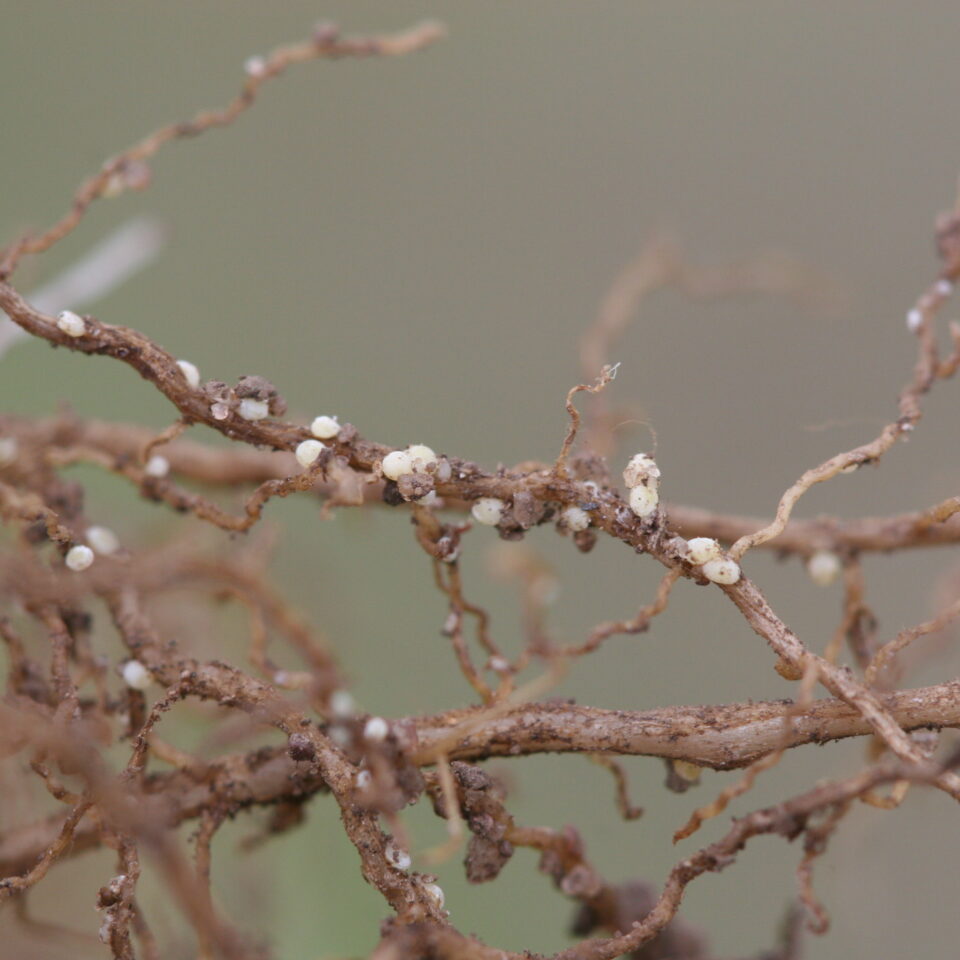
Edible beans, like any other crop are susceptible to disease when conditions are favourable. All infections are driven by 3 variables: pathogen, favourable environment and susceptible host. All 3 factors are needed in order for a disease to develop.
Diagnosis
Prevention is the only effective way to control disease in edible beans. Once diseases are established in the plant, damage has already been done and a yield hit may have already happened. Because of this, early diagnosis of infections is critical. There are a number of diseases that are detrimental to edible beans yield and quality.
Crop rotation is crucial to avoid the build-up of pathogens. Shorter rotations are more susceptible to disease that survive in the soil such as root rots, soybean cyst nematode and white mould. Avoid host crops such as soybeans, canola and potato as they are also hosts for white mould. Root rots are more difficult to control through rotation as they affect multiple crop types. Reducing soil compaction, improving drainage can reduce the incidence of root rots.
Disease: Root Rot
Symptoms
- Damping-off
- Wilting, stunted plants
- Discoloured, rotted roots
Favourable Conditions
- Compacted, poorly drained soils
Management
- Select varieties with good tolerance to root rots
- Apply seed treatments that will protect plants during early development
- Reduce soil compaction
- Improve field drainage
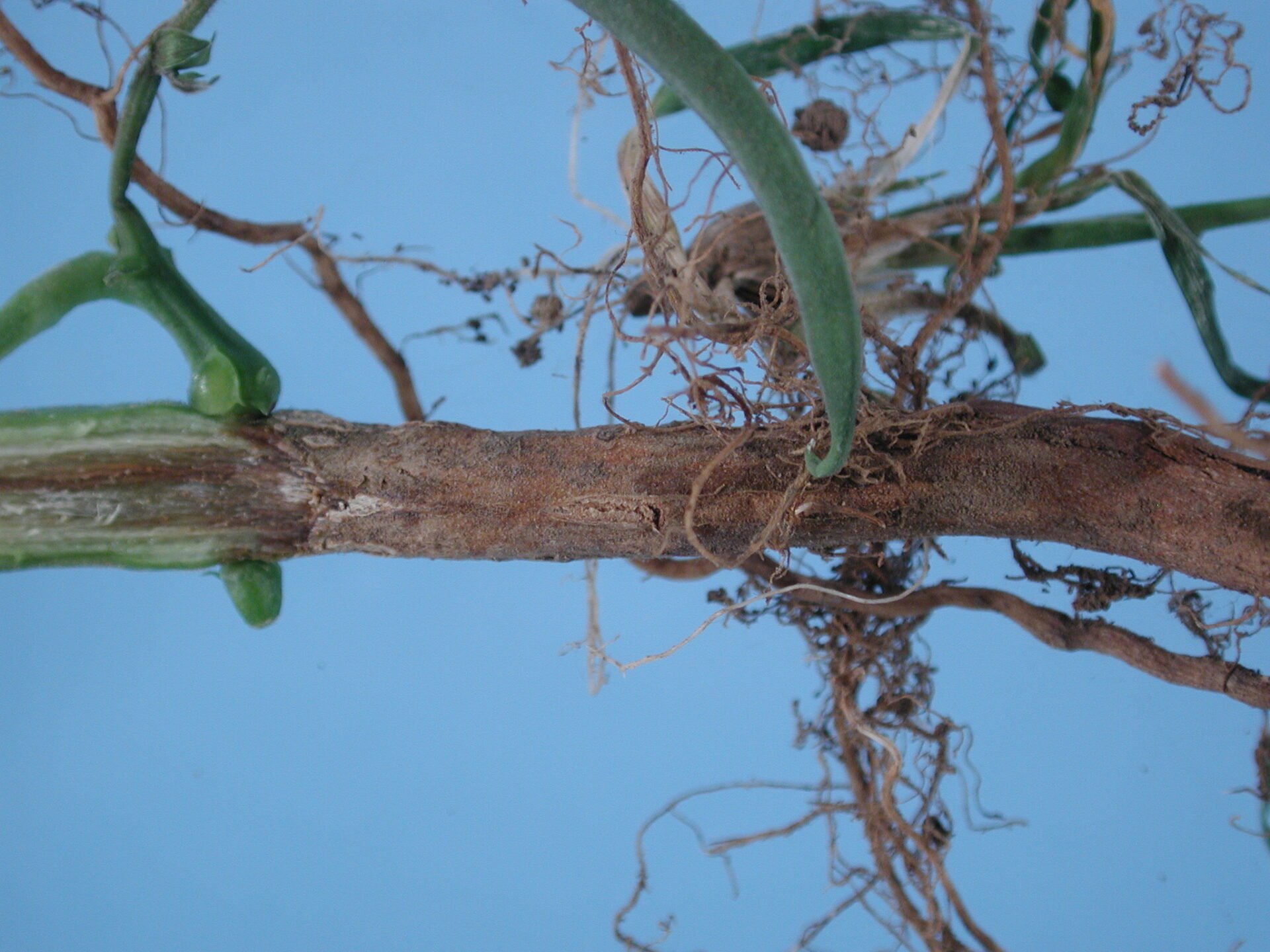
ABOVE: Root rot in edible bean plant.
Image Source: Pacific Northwest Pest Management Handbook
Disease: Soybean Cyst Nematode
Symptoms
- Yellowing, stunted plants
- Presence of nematode cysts (<1mm pin head sized, white cysts) on roots, always dig up plants to check for cysts as pulling them will knock the cyst off of the roots
- Stunted and discoloured roots (as root rots enter the plant)
Favourable Conditions
- Dry conditions
- Lighter, sandier soils
Management
- Rotate with non-host crops
- Clean equipment when moving from field to field.
- Small seeded dry beans (ex. white and black) are more tolerant than large seeded dry beans (ex. kidney, cranberry).
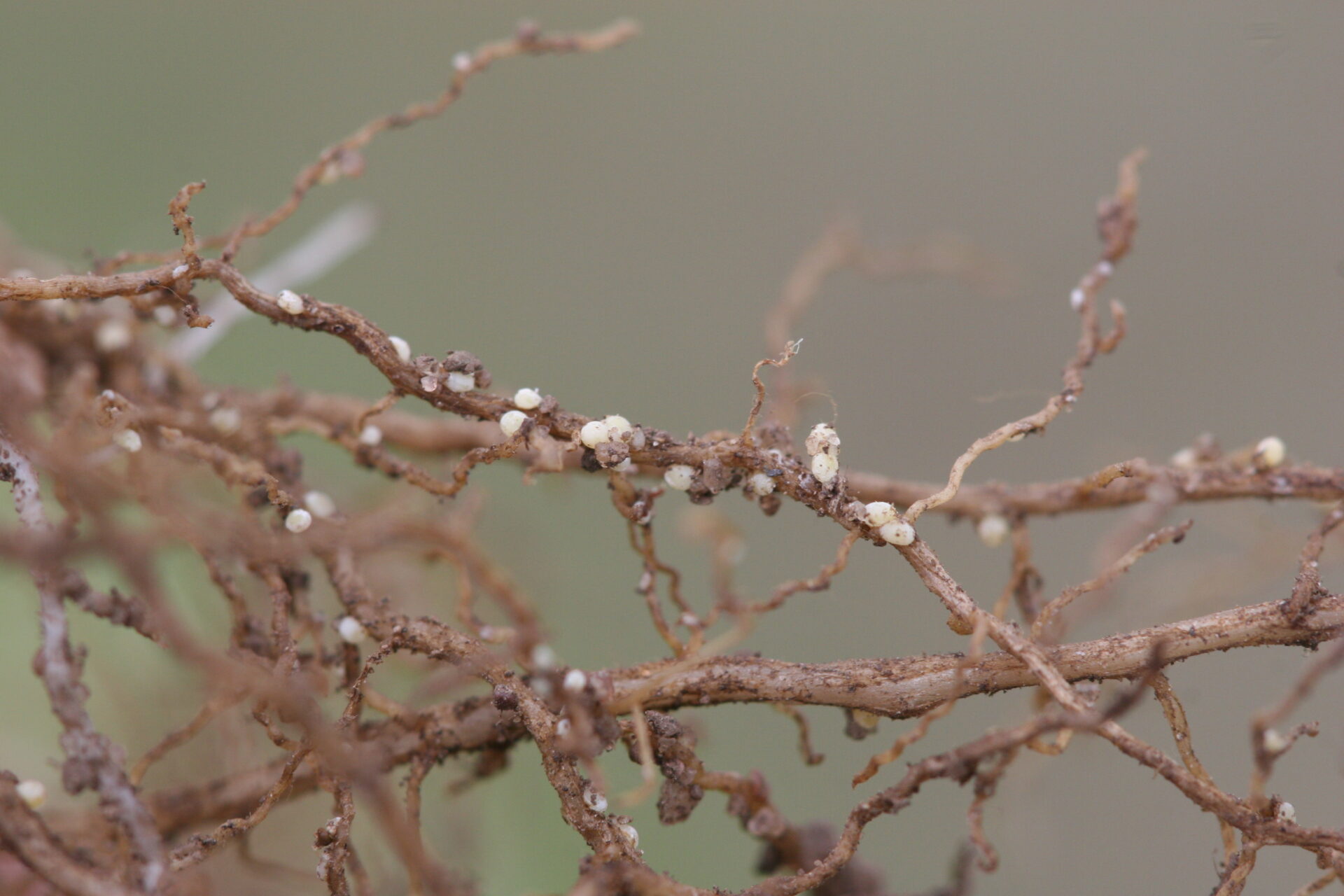
ABOVE: Soybean Cyst Nematode in edible beans.
Image Source: Crop Protection Network
Disease: Bacterial Blights
Symptoms
- Small, water-soaked lesions first showing up on the underside of leaves
- The spots will enlarge and join together to form large, necrotic areas between veins
- Spots may or may not have a thin yellow border
- Lesions on pods start as small lesions turning into sunken and dry with a reddish-brown border.
Favourable Conditions
- High humidity
- Temperature varies depending on pathogen, >27°C (common blight),<27°C (halo blight), <30°C (bacterial brown spot)
- Disease survives from year to year in infected seed and is spread by storms, people and equipment when plants are wet
Management
- Copper-based bactericides have some activity, need to be applied early, only short-term protection
- Do not plant seed from infected fields
- Stay out of fields when plants are wet
- Clean equipment when moving from field to field
- Plant resistant varieties if available (white beans)
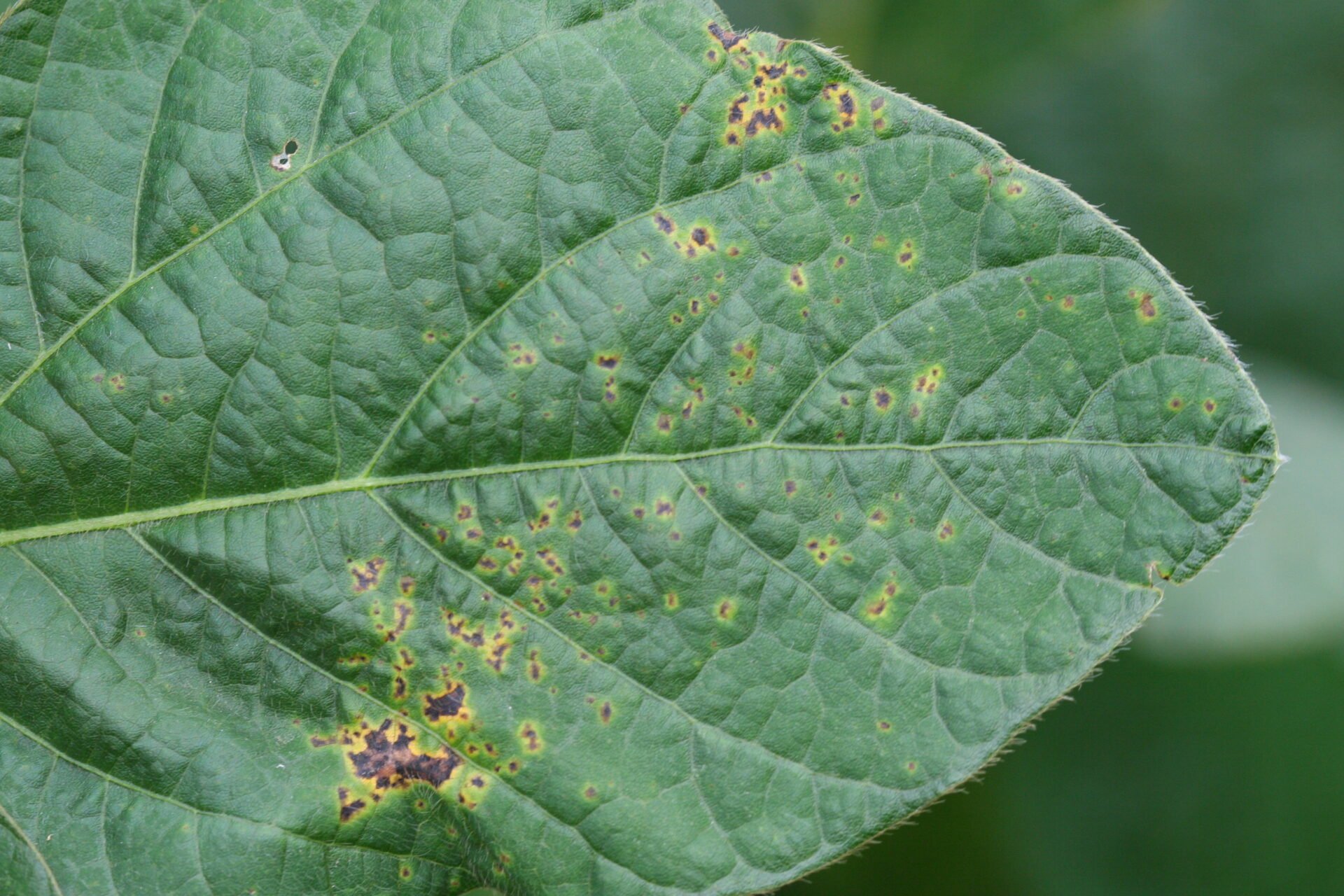
ABOVE: Bacterial Blight in edible beans.
Image Source: Crop Protection Network
Disease: Anthracnose
Symptoms
- Round/oval lesions on leaves, stems and pods Lesions are crater-like with a black ring along the edge
- Centre of the lesion may have small, black spore masses
- Veins on lower leaf surface often appear reddish-brown or purplish-red
Favourable Conditions
- Survives year to year as spores and on infected seed
- Rainy, wet weather causes spores to splash from soil to plants
- Wet conditions over long periods can cause epidemics
Management
- Plant clean seed
- Plant resistant varieties (several different races of the disease)
- Stay out of field when plants and soil are wet
- Clean equipment when moving from field to field
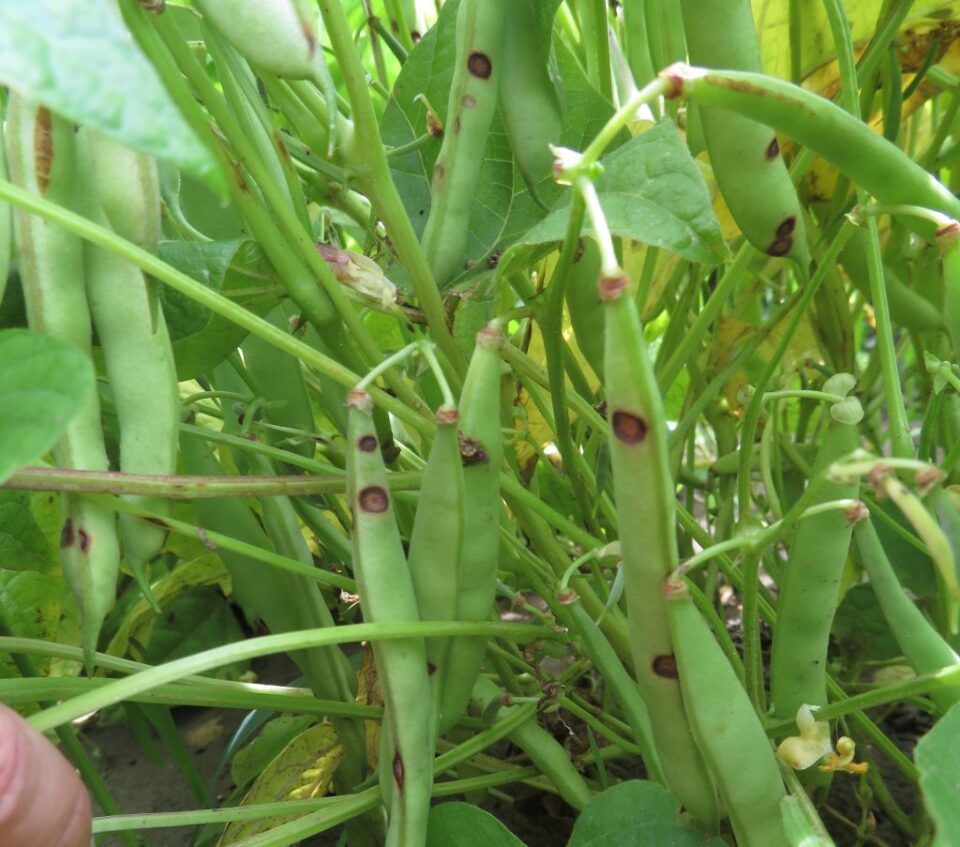
ABOVE: Anthracnose in edible beans.
Image Source: Field Crop News
Disease: White Mould
Symptoms
- Bleached areas and white fungal tufts of mould Often first appear on lower leaves and older flowers that have died off
- Hard, black sclerotia are produced on the stem surface or within the stem
Favourable Conditions
- Cool, wet weather during flowering or near harvest
Management
- Plant less susceptible varieties with upright growth habit
- Avoid rotating with host crops such as soybeans, canola, sugarbeets, and sunflowers
- Rotate more than 3 years in between host crops
- Increase air flow by planting at suggested rates and row widths
- Avoid excessive use of fertilizers which supports vigorous growth and lower air movement
- Foliar fungicides provide some control, must be applied at 1st bloom, prior to disease appearance
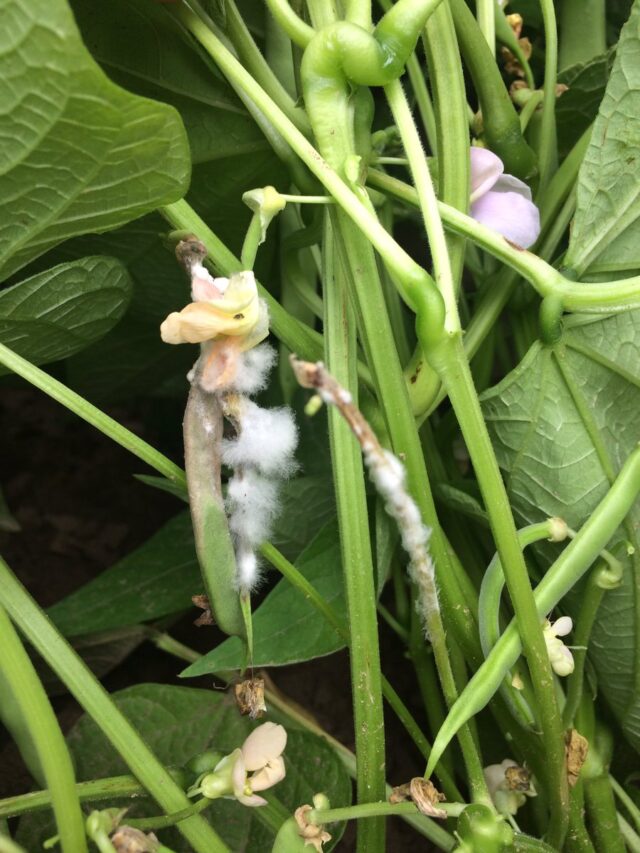
ABOVE: White Mould in edible beans.
Image Source: Nicole Penney
Management Strategies
There are a number of fungicide products that can be used to manage some of these diseases. All fungicides should be used as a preventative treatment and be applied before or at the first signs of infection.
Other general management practices that can be used include planting wider row widths which increases airflow through the crop canopy, reducing the potential wet, damp environment that many diseases favour.

Featured Image: Crop Protection Network
Additional Sources:
Michigan State University, Field Crop News, OMAFRA Crop Talk, Field Crop News, OMAFRA Pub 811: Agronomy Guide for Field Crops